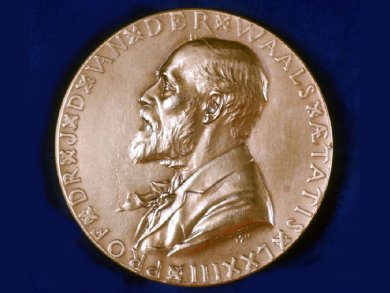The Nobel Prize in Physiology or Medicine 2012 has been awarded with one half to Sir John B. Gurdon, Gurdon Institute, Cambridge, UK, and the other half to Shinya Yamanaka, Kyoto University, Kyoto, Japan, and Gladstone Institute, San Francisco, CA, USA, “for the discovery that mature cells can be reprogrammed to become pluripotent”.
John B. Gurdon, born 1933 in Dippenhall, UK, studied zoology at Christ Church, Oxford, UK. For his PhD he studied nuclear transplantation in the frog Xenopus with Michael Fischberg at Oxford. After postdoctoral work at Caltech, USAm, he worked at the Department of Zoology, University of Oxford, UK, from 1962 to 1971 and at the MRC Laboratory of Molecular Biology, Cambridge, UK, from 1971 to 1983, before he joined the Department of Zoology, University of Cambridge in 1983.
In 1989, he was a founding member of the Wellcome/CRC Institute for Cell Biology and Cancer (later Wellcome/CR, UK) in Cambridge, and was its Chair until 2001. He was a member of the Nuffield Council on Bioethics from 1991 to 1995, and Master of Magdalene College, Cambridge from 1995 to 2002.
John B. Gurdon is best known for his pioneering research in nuclear transplantation and cloning.
Shinya Yamanaka, born 1962 in Higashiōsaka, Japan, received his M.D. at Kobe University, in 1987 and his Ph.D. at Osaka City University Graduate School in 1993, both in Japan.
From 1987 to 1989, Yamanaka was a Resident in orthopedic surgery at the National Osaka Hospital, Japan, and from 1993 to 1995 a Postdoctoral Fellow at the Gladstone Institute of Cardiovascular Disease, University of California, San Francisco, USA. From 1995 to 1996, he was a staff research investigator at the UCSF-affililated Gladstone Institute of Cardiovascular Disease, from 1996 to 1999 an assistant professor at Osaka City University Medical School, from 1999 to 2003 an associate professor at the Nara Institute of Science and Technology, form 2003 to 2005 a professor at the Nara Institute of Science and Technology, and from 2004 to 2010, Shinya Yamanaka was a professor at the Institute for Frontier Medical Sciences. Currently he is the director and a professor at the Center for iPS Cell Research and Application at Kyoto University, Japan.
Shinya Yamanaka and his team were able to generate Induced Pluripotent Stem Cells from mouse and human adult fibroblasts.
Publications
John B. Gurdon
Book
- J. B. Gurdon, J. A. Byrne, S. Simonsson, Nuclear Reprogramming by Xenopus Oocytes, Chapter 11 of Stem Cells: Nuclear Reprogramming and Therapeutic Applications: Novartis Foundation Symposium 265 (Eds: Gregory Bock, Jamie Goode), John Wiley & Sons, Hoboken 2008, 129–141.
Journal articles
- Two-dimensional morphogen gradient in Xenopus: Boundary formation and real-time transduction response,
T. Kinoshita, J. Jullien, J. B. Gurdon,
Developmental Dynamics 2006.
DOI: 10.1002/dvdy.20963 - Many ways to make a gradient,
J. C. Smith, J. B. Gurdon,
BioEssays 2004.
DOI: 10.1002/bies.20076 - Perspective on the Xenopus field,
J. B. Gurdon
Developmental Dynamics 2002.
DOI: 10.1002/dvdy.10185 - Induction of Polyoma DNA Synthesis by Injection into Frog-Egg Cytoplasm,
Ronald A. Laskey, John B. Gurdon
Eur. J. Biochem. 1973.
DOI: 10.1111/j.1432-1033.1973.tb03007.x
Shinya Yamanaka
Journal articles
- Induction of primordial germ cells from mouse induced pluripotent stem cells derived from adult hepatocytes,
Masanori Imamura, Takashi Aoi, Ako Tokumasu, Nathan Mise, Kuniya Abe, Shinya Yamanaka, Toshiaki Noce,
Molecular Reproduction & Development 2010.
DOI: 10.1002/mrd.21223 - Genome-wide DNA methylation profile of tissue-dependent and differentially methylated regions (T-DMRs) residing in mouse pluripotent stem cells,
Shinya Sato, Shintaro Yagi, Yoshikazu Arai, Keiji Hirabayashi, Naoko Hattori, Misa Iwatani, Keisuke Okita, Jun Ohgane, Satoshi Tanaka, Teruhiko Wakayama, Shinya Yamanaka, Kunio Shiota,
Genes to Cells 2010.
DOI: 10.1111/j.1365-2443.2010.01404.x - Efficient reprogramming of human and mouse primary extra-embryonic cells to pluripotent stem cells,
Shogo Nagata, Masashi Toyoda, Shinpei Yamaguchi, Kunio Hirano, Hatsune Makino, Koichiro Nishino, Yoshitaka Miyagawa, Hajime Okita, Nobutaka Kiyokawa, Masato Nakagawa, Shinya Yamanaka, Hidenori Akutsu, Akihiro Umezawa, Takashi Tada,
Genes to Cells 2009.
DOI: 10.1111/j.1365-2443.2009.01356.x - Orderly hematopoietic development of induced pluripotent stem cells via Flk-1+ hemoangiogenic progenitors,
Akira Niwa, Katsutsugu Umeda, Hsi Chang, Megumu Saito, Keisuke Okita, Kazutoshi Takahashi, Masato Nakagawa,
Shinya Yamanaka, Tatsutoshi Nakahata, Toshio Heike,
J. Cellular Physiology 2009.
DOI: 10.1002/jcp.21864 - Roles of Sall4 in the generation of pluripotent stem cells from blastocysts and fibroblasts,
Noriko Tsubooka, Tomoko Ichisaka, Keisuke Okita, Kazutoshi Takahashi, Masato Nakagawa, Shinya Yamanaka,
Stem Cell Biology 2009.
DOI: 10.1111/j.1365-2443.2009.01301.x
- Characterization of Dendritic Cells and Macrophages Generated by Directed Differentiation from Mouse Induced Pluripotent Stem Cells,
Satoru Senju, Miwa Haruta, Yusuke Matsunaga, Satoshi Fukushima, Tokunori Ikeda, Kazutoshi Takahashi, Keisuke Okita, Shinya Yamanaka, Yasuharu Nishimura,
Stem Cells 2009.
DOI: 10.1002/stem.33 - Drosophila NAT1, a homolog of the vertebrate translational regulator NAT1/DAP5/p97, is required for embryonic germband extension and metamorphosis,
Nami Yoshikane, Nao Nakamura, Ryu Ueda, Naoto Ueno, Shinya Yamanaka, Makoto Nakamura,
Development, Growth & Differentiation 2007.
DOI: 10.1111/j.1440-169X.2007.00956.x - Dnmt3a2 targets endogenous Dnmt3L to ES cell chromatin and induces regional DNA methylation,
Keisuke Nimura, Chisaki Ishida, Hiroshi Koriyama, Kenichiro Hata, Shinya Yamanaka, En Li, Kiyoe Ura, Yasufumi Kaneda,
Genes to Cells 2006.
DOI: 10.1111/j.1365-2443.2006.01012.x




